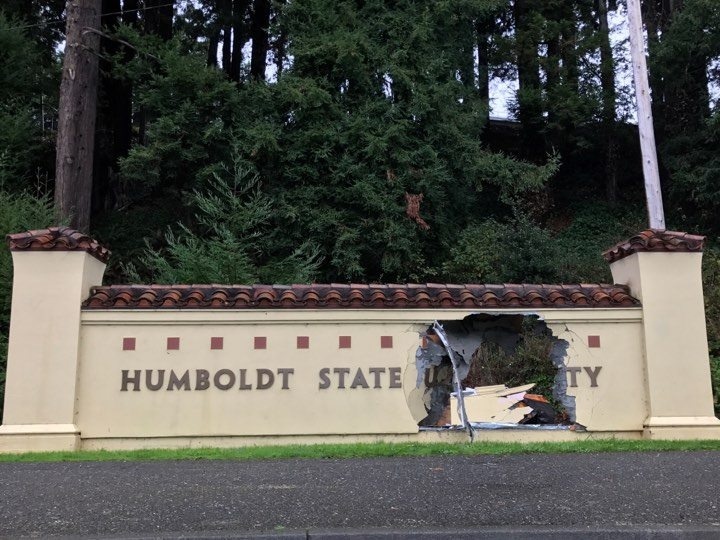
The morning after the crash. Photos by John Ross Ferrara.
Almost four months after a Humboldt State student punched a Looney Tunes-style hole through one of the university’s entrance signs with a Ford Focus, the repairs are nearly complete.
All that’s left from the $10,000 fix are the missing letters, “E UNIVERSITY,” which HSU spokesperson Jarad Petroske tells the Outpost arrived in the mail earlier this week.
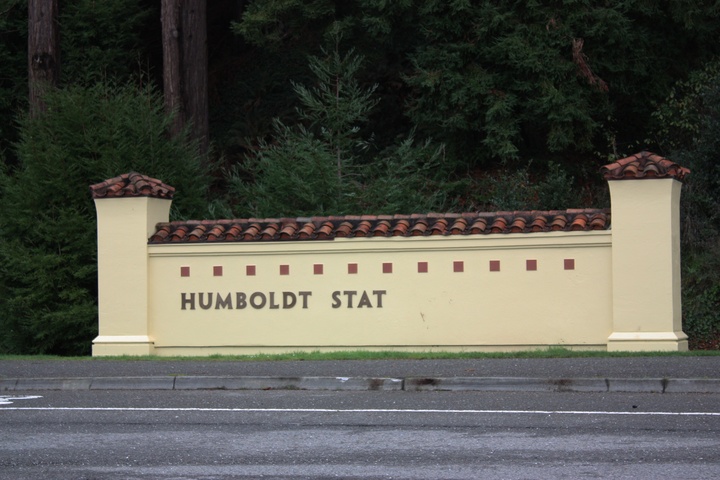
The latest condition of the sign.
But months later, as the university prepares to set its letters back in place and leave this whole incident behind, there’s still no official report on what caused the crash.
The student involved was never arrested, leading many to speculate how and why the crash happened. After all, it did happen early Sunday morning, a day before Halloween, during a time when many college students were sleeping off that night’s drunken escapades.
So before the sign is fully repaired and we all move on with our lives, the Outpost decided to take one last look at what happened that night and address a few unanswered questions.
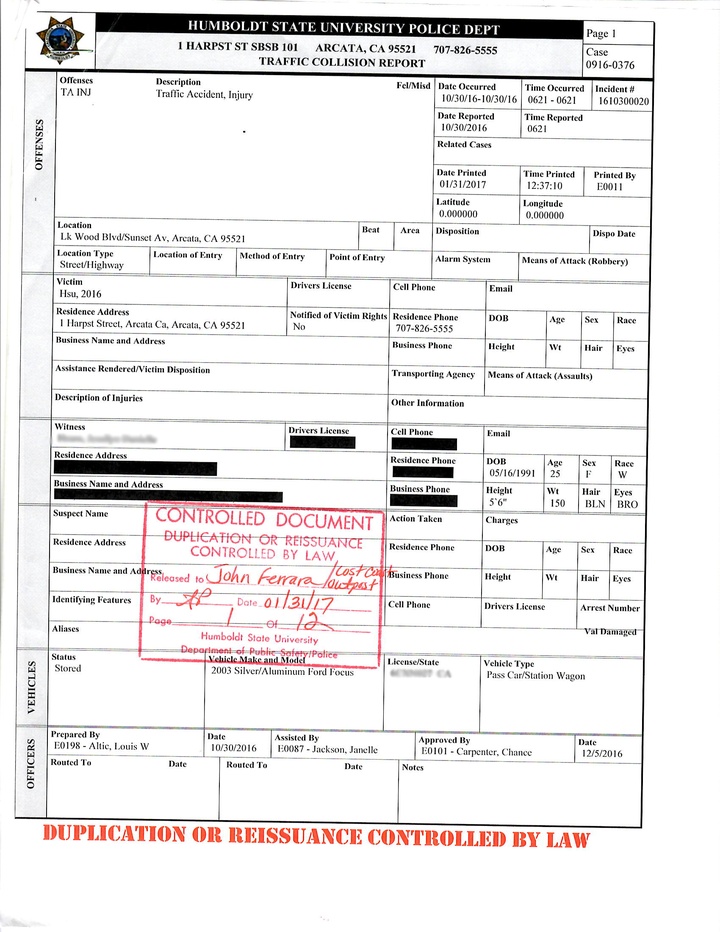
The UPD traffic report.
According to a traffic report obtained by the Outpost, the student — whose name we have chosen to leave out of this article — had been drinking before the crash, but was not asked to take a breathalyzer or any other sobriety test that morning.
The fourth page of the traffic report prepared by University Police Department officer Louis Altic stated that the student had not been driving under the influence at the time of the crash. However, the sobriety portion of report on page 11 has two check marks in it. One under “HAD BEEN DRINKING-IMPAIRMENT UNKNOWN” and one under “NOT APPLICABLE.”
When asked about this discrepancy, UPD Chief Donn Peterson told the Outpost that it was safe to assume that this means officers knew the student had been drinking, but did not administer any sobriety tests.
“That’s probably accurate,” Chief Peterson said. “There’s a lot of reasons why we might not do that. The guy had driven through the wall and sustained a lot of damage to the vehicle. There are certain circumstances where field sobriety tests are appropriate. [Officers deciding not to administer a sobriety test] is not necessarily an unusual thing.”
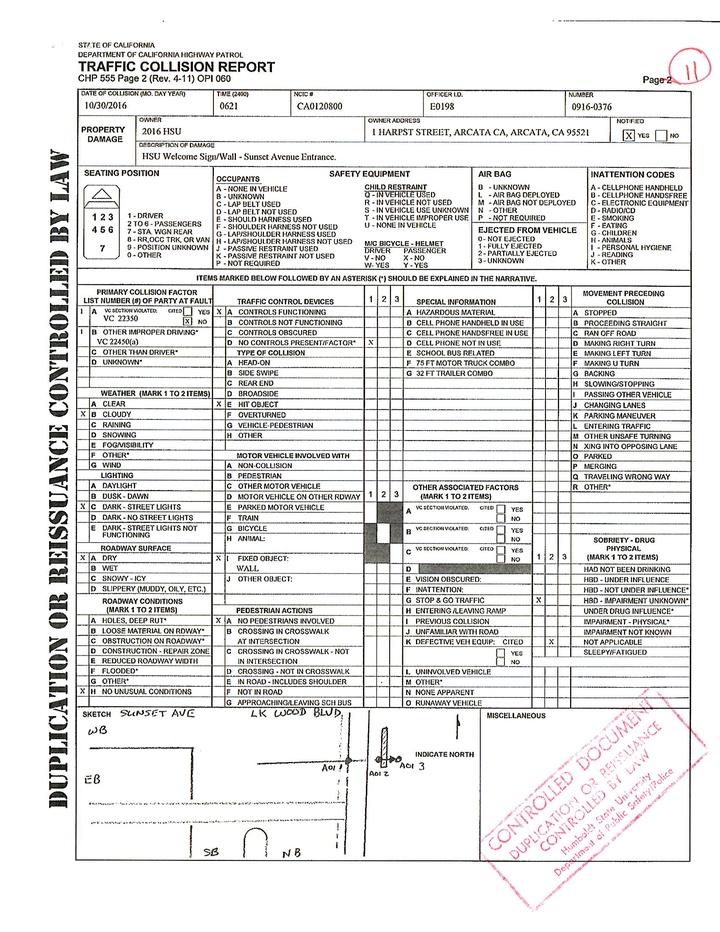
And he’s right. Based on the Outpost’s BOOKED files, the UPD has made only one DUI arrest in the last two years. However, there does seems to have been a steep decline in UPD administered DUIs since the beginning of the Outpost’s records, which date back to 2012:
- 2012: Eight DUI arrests.
- 2013: Three DUI arrests.
- 2014: Two DUI arrests.
- 2015: No DUI arrests.
- 2016: One DUI arrest.
Although police agencies have made a strong push to arrest and prosecute drunk drivers in the last few decades, Peterson said that administering a sobriety test is still at the discretion of the responding officer.
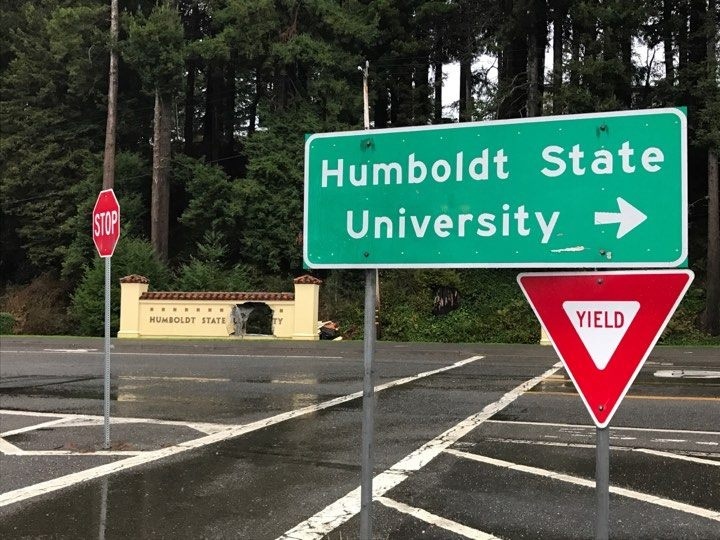
“Every situation is a unique situation,” Peterson said. “Yes, there is precedent of past practices. But there’s something we have called discretion. It’s one of the things we try to supply judiciously and wisely. It’s absolutely within an officer’s view to have proactive discretion. This is a case where there is discretion.”
When asked if university officers may sometimes protect students in unfortunate situations, like the one who crashed into the university sign, Peterson said that university officers definitely work in a different environment than other police agencies.
“I’ve been a cop outside of the campus environment and within, and I think there is definitely a part of our strategic plan to foster student success,” Peterson said. “We deal with people a little different now then we would have 10 or 15 years ago. There’s more focus on de-escalation and crisis intervention. We definitely have a different take, the environment is a little different and we look out for students, absolutely. They are our constituency group.”

UPD photos of the incident.
However, Peterson made it clear that other cases where students have received DUIs should be looked at as separate incidents. When asked how he would respond to the argument that this student may have been given preferential treatment, while others who haven’t destroyed $10,000 worth of school property have been prosecuted to the fullest extent of the law, Peterson said the argument lacks substance.
“We look at every individual case,” Peterson said. “I think if you were arrested, a good defense for that wouldn’t be ‘other people drink and drive.’ It’s lacks substance and I think every case is different. It’s a very human response and I get it, but In the realm of the criminal justice system that doesn’t really carry any weight.”
It is also important to remember that although no sobriety tests were given that dark October morning, we also don’t know if the student was over the limit at the time of the crash. In fact, the official cause of the crash was redacted from the Outpost’s copy of the traffic report, and may have something to do with private health information. But as it stands, we can’t say for sure what caused the crash.
What we can tell you is that the student was speeding, traveling approximately 40 mph and accelerating — not slowing down — as he approached the stop sign on Sunset Avenue. There’s also no evidence that the student made an attempt to turn or brake as they hit the sign according to a witness. And there was no report of any mechanical failure with the car.

We can tell you the driver received a few minor injuries and was found shaken up, laying face down in the nearby grass. And that he was transported to Mad River Community Hospital.
And we can tell you that despite their appearance, the 2-foot-thick entrance signs are wood framed and mostly hollow, which likely prevented this from being a much more serious crash.
Another silver lining to what could have been a tragic part of HSU’s history: The crash was, for a brief moment, an internet sensation. HSU students loved the Halloween hole, many of them gathering in front of it to take selfies or pose as the Kool-Aid Man, while others decorated it with festive spiderwebs.
Yes, the hole has become a beloved part of HSU’s history; expensive, potentially tragic, but loved.
And when those missing letters are reaffixed to their peach stucco home, and the crash fades into folklore told by future generations of HSU students, that’s how it should be remembered.
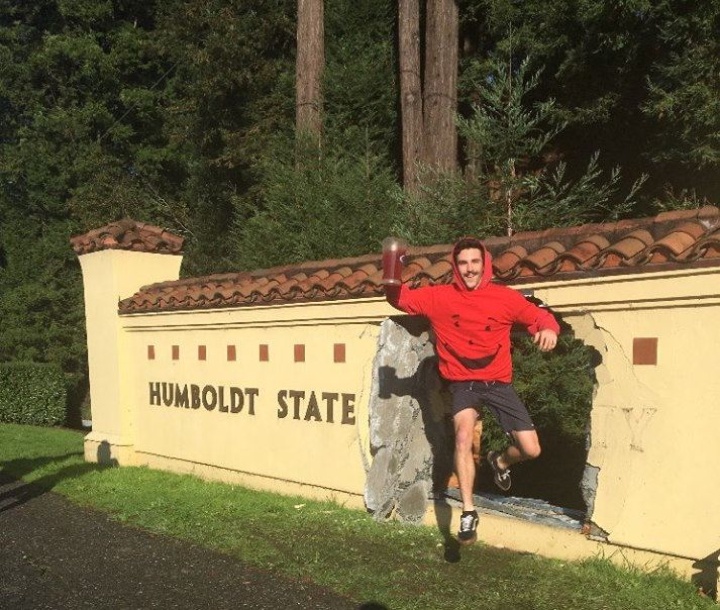
Oh, yeaaah! HSU student Vinny Van Dyke couldn’t resist this perfect Kool-Aid Man photo op.
CLICK TO MANAGE